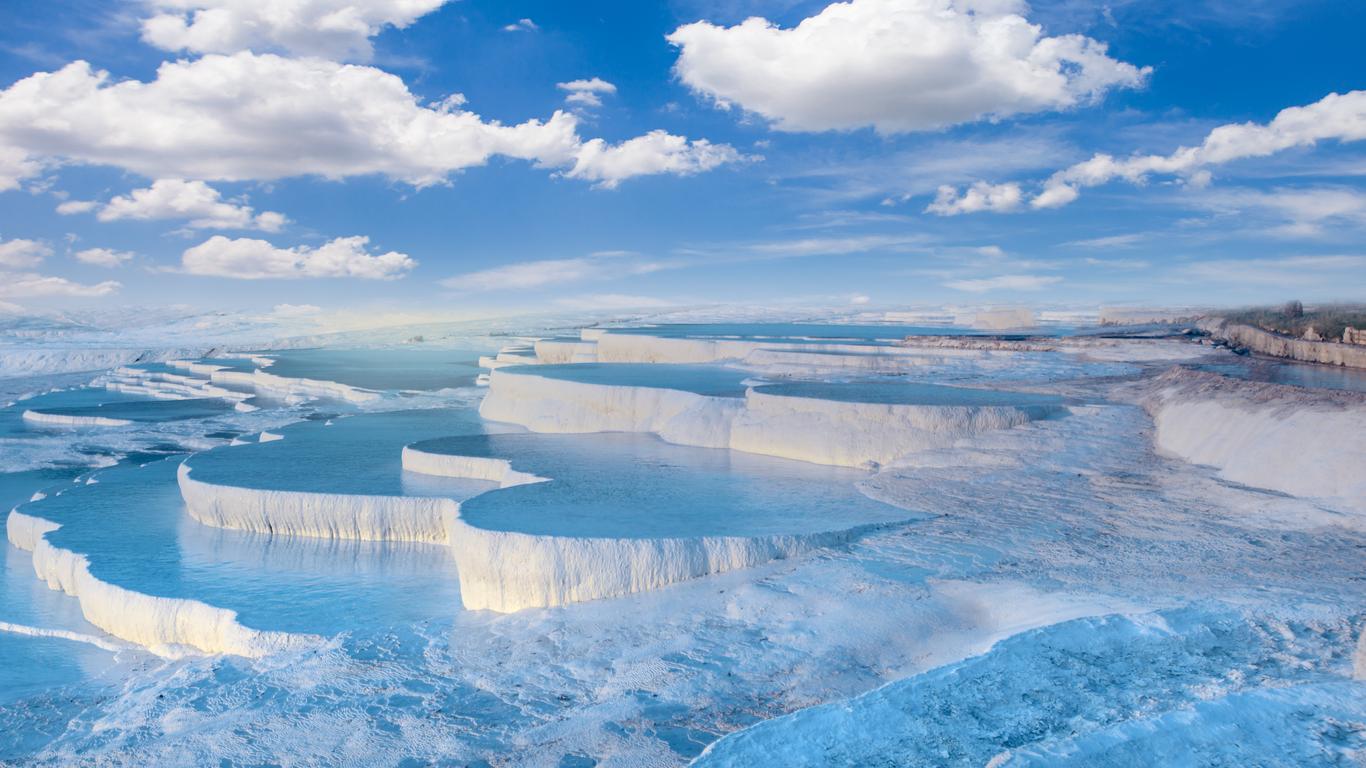Translating to “cotton castle”, Pamukkale is best known for its sparkling travertine pools that showcase cotton-white terraces and sky-blue water. Pamukkale is also dotted with ancient Byzantine ruins, Greek Hellenistic temples and Roman amphitheatres.
Things to do in Pamukkale
Cascading down the mountainside, Pamukkale's World Heritage-listed travertine pools are truly magical, especially at sunset. You’ll often see visitors slathering themselves with silt, as the mineral-rich mud is known for its healing properties.
Hierapolis has been watching over the travertines since 190 BC. Entrance to the ancient spa city is via a soaring 5th-century Byzantine gate. Highlights include the Roman Theatre, a magnificent venue built to house 12,000 spectators. You can also stroll around the ruins of the Temple of Apollo.
While the travertines tend to steal the spotlight, it's also worth visiting the nearby ruins of Aphrodisias. The Heritage-listed ancient Greek Hellenistic city dates back to the 3rd century. Stroll around the ruins of the Temple of Aphrodite, dedicated to the Greek goddess of love.
Set beside the Temple of Apollo, Pamukkale's Antique Pool is the perfect way to unwind after a day of sightseeing. The mineral-rich hot spring maintains a balmy temperature of 36 degrees Celsius. It's dotted with half-submerged ancient columns and surrounded by lush tropical plants.
Getting around Pamukkale
Pamukkale is easy to get around on foot, with the travertines located a 15-minute walk from the village. Regional flights arrive at Denizli Cardak Airport, located a one-hour drive from Pamukkale. Local buses run to Denizli in around 40 minutes.





